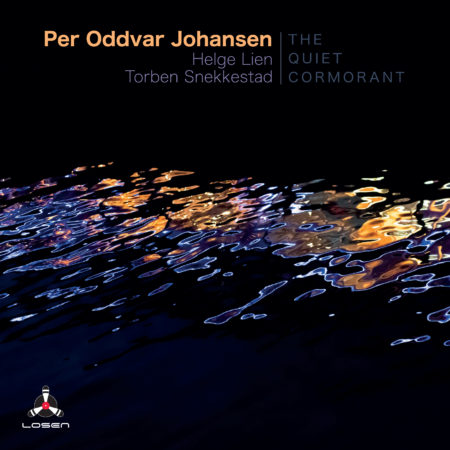Artists
Per Oddvar Johansen drums, vibraphone
Helge Lien piano
Torben Snekkestad tenor & soprano saxophone, bass clarinet
Guest:
Hedvig Mollestad guitar on tracks 3 and 6
CD/LP info
CD Release No: LOS 237-2 180 gram LP Release No: LOS 237-1
CD EAN: 7090025832376 LP EAN: 7090025835117
All compositions by Per Oddvar Johansen
Recorded July 3 & 4, 2017 by Jan Erik Kongshaug at Rainbow Studio, Oslo, Norway
Mixed September 29, 2017 by Jan Erik Kongshaug and Per Oddvar Johansen at Rainbow Studio
Mastered November 28 & 30, 2019 by Audun Strype at Strype Audio, Oslo
Produced by Per Oddvar Johansen
Front cover photo by Per Oddvar Johansen
Partly supported by Fond for lyd og bilde
Kjøp plater direkte fra Losen Records. Kr 200,- per CD inkl. porto. Vipps til 99006190 og mail navn og adresse til odd@losenrecords.no. Pris på LP – Kr 350,- inklusive porto
Vinyl cover in the link below:
Download Press Release (PDF)
There is something rather wonderful about the choreography of a drummer, how they sit with their dancer-like poise, whether they’re in full flight, or whether they’re almost whispering their music, like caressing a bird with a broken wing. How I envy a drummer’s ability to ‘inhabit’ time, stretching it, dancing with it, interrupting it, making mischief. Per Oddvar Johansen has this extraordinary physical connection with his drums, they simply belong together, sharing a deep sense of listening, singing their own mysterious language.
So it’s out of this relationship with his instruments, with music itself and with nature, that Per Oddvar’s compositions have grown. Together with pianist Helge Lien and sax player Torben Snekkestad he created the album ‘Let’s Dance’ with its infectious physicality and clear lyrical lines, while exploring a musical world left behind by the great Paul Motian who died in 2011, a world which Per Oddvar felt was in danger of disappearing.
The titles of the 13 tracks on The Quiet Cormorant read like the titles of a collection of short stories, or of miniature paintings on the wall of a gallery: ‘Island Movies’, ‘Sunshine – After Fog’, ‘Where Did You Go?’, ‘Current Tides’, ‘The Still’. If there is a journey here it’s a deeply personal one for Per Oddvar, but it also becomes a personal one for the listener. This idea of ‘playing with time’ means it’s fluid enough to find ourselves inside the music too.
Per Oddvar wrote much of the music in quiet, creative solitude in The Arctic Hideaway on a coastline near Bodø in northern Norway where the Atlantic ocean, the light, the sounds of birds and the sense of space and distance become an artist’s palette. (The track ‘Sørvær
Major Manor’ is named after the Hideaway’s own island.) In his head were the sounds of his fellow musicians in the trio. Helge Lien he describes as having “a unique way of incorporating a Norwegian sound in his playing”, while he talks about Torben’s phrasing and detail, his unbelievable control over his saxophone. Audiences, too, perceive so much thoughtfulness in Helge’s playing, a quiet passion as he leans in to every note, while Torben’s sound is profoundly songlike, the breath mattering as much as the notes.
Joining the trio on two tracks is the guitarist Hedvig Mollestad, another remarkable presence in Norwegian music in recent years. “Hedvig is such a great musician” says Per Oddvar “I like the rock-reminiscence it gives to the record as a whole”. Certainly it’s far more than a guest appearance from Hedvig. When ‘Love, Peace and Currywurst’ powers on to the album’s landscape it’s like the crash of the oceans wave onto the beach, a hymn to Nature, a party on the sands of time.
Per Oddvar has already had a remarkable career in music, from early rock days, through working with such luminaries of the Norwegian scene as Christian Wallumrød, Trygve Seim or Solveig Slettahjell. He’s always in demand, so what does this trio give him that isn’t answered elsewhere? “It’s a very strange and rewarding thing to have someone play music from your own head”, he tells me. “My goal is to create rubato, open music, that floats or hovers, I like to think of it as weightless music.”
In Norwegian mythology the cormorant is seen as a good omen, a strong, powerful bird that listens, and knows when the time is right. Maybe what we discover here is that Per Oddvar himself is the Quiet Cormorant of the title.
Fiona Talkington
December 2019

